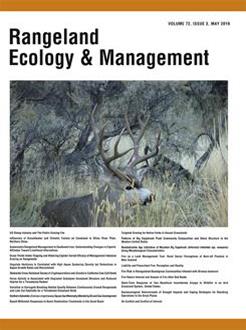Rangelands and hayfields provide a large portion of remaining surrogate habitat for many species of declining grassland birds in North America. We compared late-cut hayfields and continuously grazed pastures at low to moderate cattle densities for providing suitable breeding habitat in eastern Canada for the nationally threatened Bobolink (Dolichonyx oryzivorus). To examine the quality of both habitats, we conducted point counts and monitored 87 nests during the 2015 and 2016 breeding seasons. Bobolink abundance and daily survival rate (DSR) of nests were modeled sequentially by habitat and sex as a function of vegetation structure, prey availability, and agricultural management. Year and habitat were the strongest predictors of abundance. When analyzed separately for pastures and hayfields, vegetation height was most important for female abundance in pastures while pasture size was most important for males. Nests in hayfields had significantly higher daily survival (DSR = 0.98 ± 0.01) than nests in pastures (DSR = 0.94 ± 0.01). Nesting success was highest in hayfields with taller vegetation, while in pastures, no microhabitat variable showed a clear relationship with DSR. Within pastures, cattle stocking densities of ≤ 1 animal units (AU) · ha-1 were not related to DSR. This study provides evidence that late-cut hay is of highest quality, but that small-scale beef farms with low to moderate stocking densities are suitable targets for conservation efforts of Bobolinks in eastern North America.
How to translate text using browser tools
30 April 2019
Variation in Surrogate Breeding Habitat Quality between Continuously Grazed Rangelands and Late-Cut Hayfields for a Threatened Grassland Birds
Alice L. Pintaric,
Ron Reid,
Erica Nol
ACCESS THE FULL ARTICLE

Rangeland Ecology and Management
Vol. 72 • No. 3
May 2019
Vol. 72 • No. 3
May 2019
Bobolink
continuous grazing
grassland birds
late-cut hay
nest success
rangeland management




